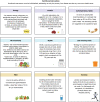Optimizing nutrition in hepatic cirrhosis: A comprehensive assessment and care approach
- PMID: 38596498
- PMCID: PMC11000076
- DOI: 10.3748/wjg.v30.i10.1313
Optimizing nutrition in hepatic cirrhosis: A comprehensive assessment and care approach
Abstract
Cirrhosis is considered a growing cause of morbidity and mortality, which represents a significant public health problem. Currently, there is no effective treatment to reverse cirrhosis. Treatment primarily centers on addressing the underlying liver condition, monitoring, and managing portal hypertension-related complications, and evaluating the potential for liver transplantation in cases of decompensated cirrhosis, marked by rapid progression and the emergence of complications like variceal bleeding, hepatic encephalopathy, ascites, malnutrition, and more. Malnutrition, a prevalent complication across all disease stages, is often underdiagnosed in cirrhosis due to the complexities of nutritional assessment in patients with fluid retention and/or obesity, despite its crucial impact on prognosis. Increasing emphasis has been placed on the collaboration of nutritionists within hepatology and Liver transplant teams to deliver comprehensive care, a practice that has shown to improve outcomes. This review covers appropriate screening and assessment methods for evaluating the nutritional status of this population, diagnostic approaches for malnutrition, and context-specific nutrition treatments. It also discusses evidence-based recommendations for supplementation and physical exercise, both essential elements of the standard care provided to cirrhotic patients.
Keywords: Cirrhosis; Diet; Guidelines; Nutritional diagnosis; Treatment.
©The Author(s) 2024. Published by Baishideng Publishing Group Inc. All rights reserved.
Conflict of interest statement
Conflict-of-interest statement: The authors declare that they have no conflict of interest.
Figures




Similar articles
-
The portal hypertension syndrome: etiology, classification, relevance, and animal models.Hepatol Int. 2018 Feb;12(Suppl 1):1-10. doi: 10.1007/s12072-017-9827-9. Epub 2017 Oct 24. Hepatol Int. 2018. PMID: 29064029 Review.
-
Acute Liver Injury and Decompensated Cirrhosis.Med Clin North Am. 2020 Jul;104(4):647-662. doi: 10.1016/j.mcna.2020.02.010. Med Clin North Am. 2020. PMID: 32505258 Review.
-
Presentation and complications associated with cirrhosis of the liver.Curr Med Res Opin. 2015 May;31(5):925-37. doi: 10.1185/03007995.2015.1021905. Curr Med Res Opin. 2015. PMID: 25697811 Review.
-
Varices and Variceal Hemorrhage in Cirrhosis: A New View of an Old Problem.Clin Gastroenterol Hepatol. 2015 Nov;13(12):2109-17. doi: 10.1016/j.cgh.2015.07.012. Epub 2015 Jul 17. Clin Gastroenterol Hepatol. 2015. PMID: 26192141 Free PMC article. Review.
-
Hepatic venous pressure gradient measurement in patients with liver cirrhosis: a correlation with disease severity and variceal bleeding.Medicina (Kaunas). 2009;45(1):8-13. Medicina (Kaunas). 2009. PMID: 19223700
Cited by
-
Hepatic microcirculatory disturbance in liver diseases: intervention with traditional Chinese medicine.Front Pharmacol. 2024 Jul 23;15:1399598. doi: 10.3389/fphar.2024.1399598. eCollection 2024. Front Pharmacol. 2024. PMID: 39108760 Free PMC article. Review.
References
-
- Ginès P, Krag A, Abraldes JG, Solà E, Fabrellas N, Kamath PS. Liver cirrhosis. Lancet. 2021;398:1359–1376. - PubMed
-
- D'Amico G, Garcia-Tsao G, Pagliaro L. Natural history and prognostic indicators of survival in cirrhosis: a systematic review of 118 studies. J Hepatol. 2006;44:217–231. - PubMed
-
- Müller MJ, Böttcher J, Selberg O, Weselmann S, Böker KH, Schwarze M, von zur Mühlen A, Manns MP. Hypermetabolism in clinically stable patients with liver cirrhosis. Am J Clin Nutr. 1999;69:1194–1201. - PubMed
Publication types
MeSH terms
LinkOut - more resources
Full Text Sources
Medical

